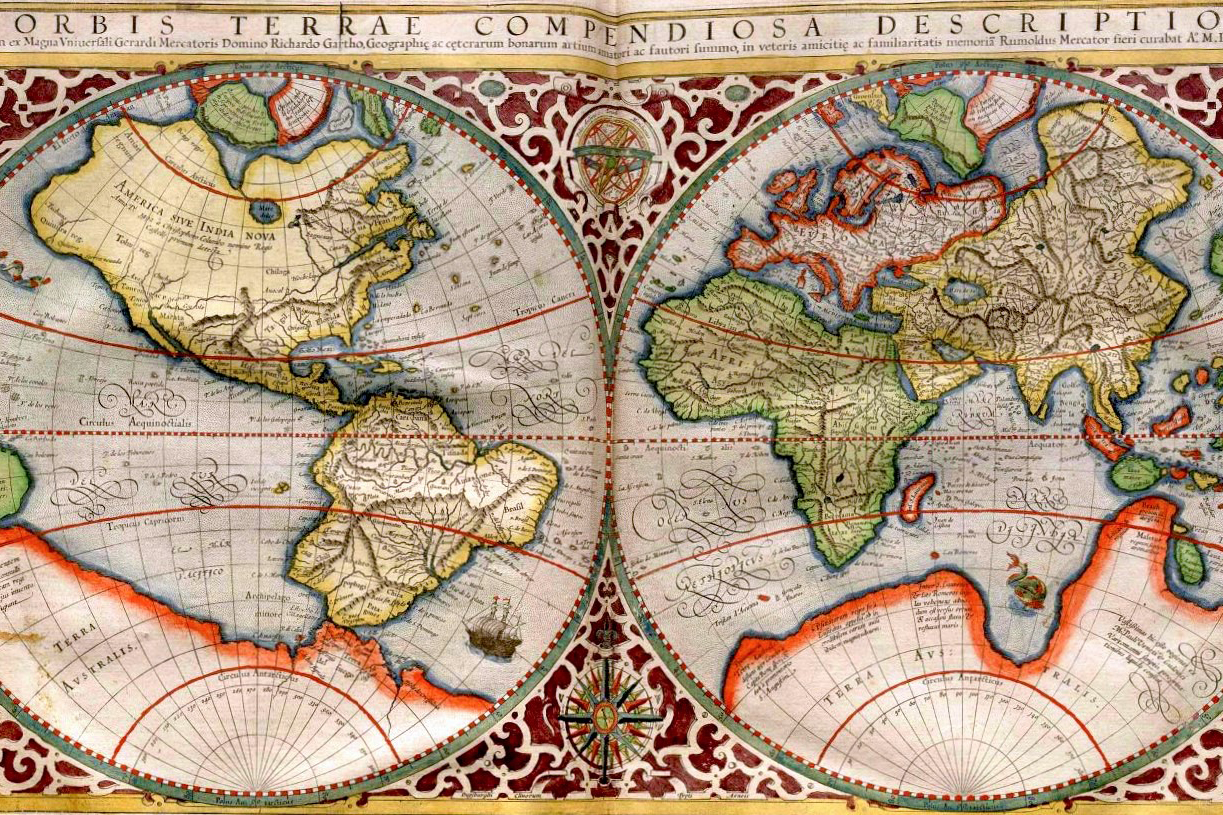Mapping and counter-mapping — the process of recreating maps through a non-colonial lens — can create multiple ways of knowing places and lands through diverse cartographic practices.
To discuss the different ways of thinking about maps and mapping, from January 22–27, the Blackwood Gallery at UTM streamed a multimedia presentation and discussion titled “(Counter-)Mapping” as part of its virtual public program Running with Concepts: The Mediatic Edition.
Panellists included Susan Blight and Hayden King from the Ogimaa Mikana Project, an artist collective which seeks “to restore Anishinaabemowin place-names… of Gichi Kiiwenging (Toronto).” Also in attendance was Nicky Recollet, a geographic information system (GIS) analyst with the Robsinson Huron Waawiindaamaagewin, a treaty-level initiative aimed at Indigenous sovereignty and reconciliation.
The program was moderated by Heather Dorries, an assistant professor at the Department of Geography & Planning and the Centre for Indigenous Studies.
What is counter-mapping?
Counter-mapping is a process of cartography that challenges the dominant views of the world and methods in cartography. Counter-mapping can allow for marginalized voices to communicate the stories and reveal the histories of their land.
Maps are something that people interact with on an almost daily basis, from using Google Maps or referring to COVID-19 dashboards, said Dorries, but she noted, “They’re also of course, tools of colonialism. They’ve been used as ways of representing Western and colonial knowledges, and implementing regimes of private property.”
Recollet, who uses GIS with the Robinsons Huron Treaty-Waawiindaamaagewin, maps land use to support land management, treaty claims, and environmental protection. She explained that, when looking at old Western maps, “you [can] see that a lot of these political boundaries in lines that they have given weren’t even probably registered or represented even at that time.” Western mapmaking has produced maps that created land boundaries and territories on Indigenous lands that did not align with how the people native to the land viewed it.
Rethinking cartographic practices can allow for diverse practices to be utilized to display different ways of knowing a land to undo colonial maps. For Blight and King, this is done by reclaiming and renaming urbanized settler spaces through billboards and street signs.
Through their artist collective, the Ogimaa Mikana Project, art and activism is brought together to contribute to Anishinaabe cultural resurgence, decolonization, and social justice. Their past projects include putting up a “Leader’s Path” sign over the Queen’s Street street sign and putting up a billboard in Thunder Bay that reads “Animikii-waajiw,” the Anishinaabe name for the area.
The power within mapping
There is “power that’s contained in representing particular knowledges about places and understandings of territory,” said Dorries. Counter-mapping can be a useful tool for decolonization, but it does not only function as an anti-colonial tool.
King noted that the “traditional understanding of mapping… can be useful for things like [getting] land back.” As part of their work at the Yellowhead Institute, they created an interactive map of mining claims in Ontario. According to King, these maps can be a great tool for learning about mining claims in your area and using that information to organize and mobilize advocacy for the land in your community.
King cautioned that while mapping can be useful for helping to protect lands and using revitalized place-names, maps may allow people to see land as a commodity.
Recollet shares how in their own work when creating traditional ecological mappings, they are cautious of drawing lines to represent boundaries on lands to mark off territories. It can be “really hard to give lines and really hard to put points on the map.”
“If you just put a little point on a map and say that this is a sacred place — whether it’s for medicine or hunting or fishing — then you’re kind of giving them the clear way to say, well then, just this little spot is the only spot that matters, and everything around it is fine.”
Mapping as an anti-colonial tool is limited in the same way knowledge is in the public sphere, said Blight. Mapping, like knowledge, “can be appropriated or misappropriated and used to dispossess us even further.”
Language use in cartography
Part of the influence that one can impose when creating maps comes from the use of language in maps, which can shape how people think about the lands and the kinds of knowledge being represented in maps.
By using Anishinaabemowin language on maps, it requires non-Indigenous people “to do the work to understand our point of view,” said King. Highlighting the campaign that occurred to rename Anishinaabemowin place-names in Toronto, their work in language revitalization of place names is a resistance to colonial naming and erasure, said King.
Words in a language can contain rich meaning rooted in a specific culture and translating it could diminish the cultural significance it already embodies. In Recollet’s words, “Why translate it for others… The meaning is really there and strong in the word itself.”


